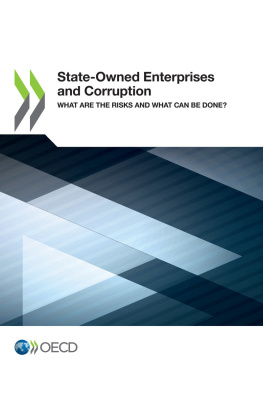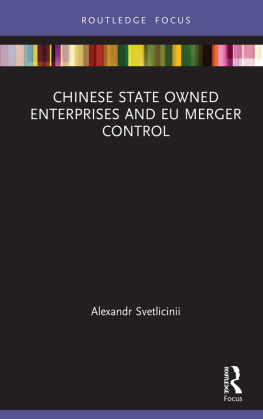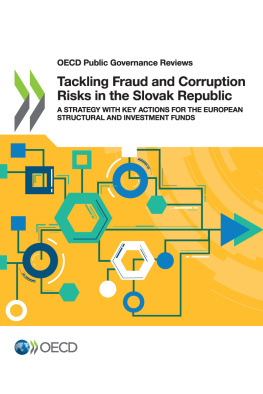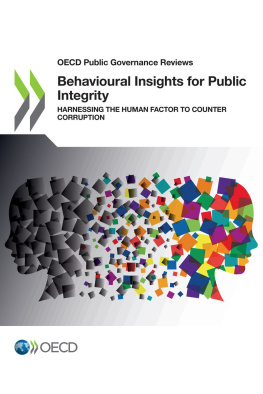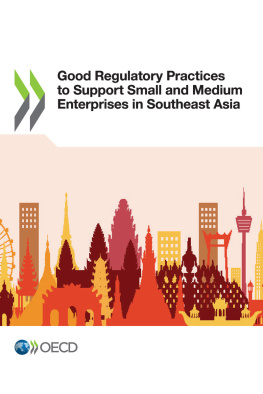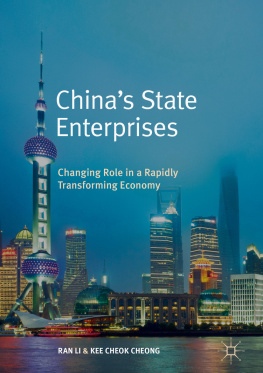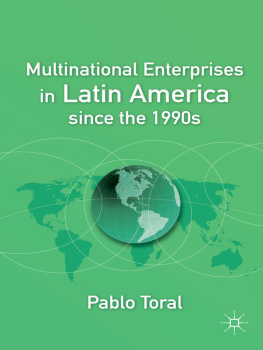coll. - State-owned enterprises and corruption : what are the risks and what can be done?
Here you can read online coll. - State-owned enterprises and corruption : what are the risks and what can be done? full text of the book (entire story) in english for free. Download pdf and epub, get meaning, cover and reviews about this ebook. year: 2018, genre: Politics. Description of the work, (preface) as well as reviews are available. Best literature library LitArk.com created for fans of good reading and offers a wide selection of genres:
Romance novel
Science fiction
Adventure
Detective
Science
History
Home and family
Prose
Art
Politics
Computer
Non-fiction
Religion
Business
Children
Humor
Choose a favorite category and find really read worthwhile books. Enjoy immersion in the world of imagination, feel the emotions of the characters or learn something new for yourself, make an fascinating discovery.
State-owned enterprises and corruption : what are the risks and what can be done?: summary, description and annotation
We offer to read an annotation, description, summary or preface (depends on what the author of the book "State-owned enterprises and corruption : what are the risks and what can be done?" wrote himself). If you haven't found the necessary information about the book — write in the comments, we will try to find it.
State-owned enterprises and corruption : what are the risks and what can be done? — read online for free the complete book (whole text) full work
Below is the text of the book, divided by pages. System saving the place of the last page read, allows you to conveniently read the book "State-owned enterprises and corruption : what are the risks and what can be done?" online for free, without having to search again every time where you left off. Put a bookmark, and you can go to the page where you finished reading at any time.
Font size:
Interval:
Bookmark:
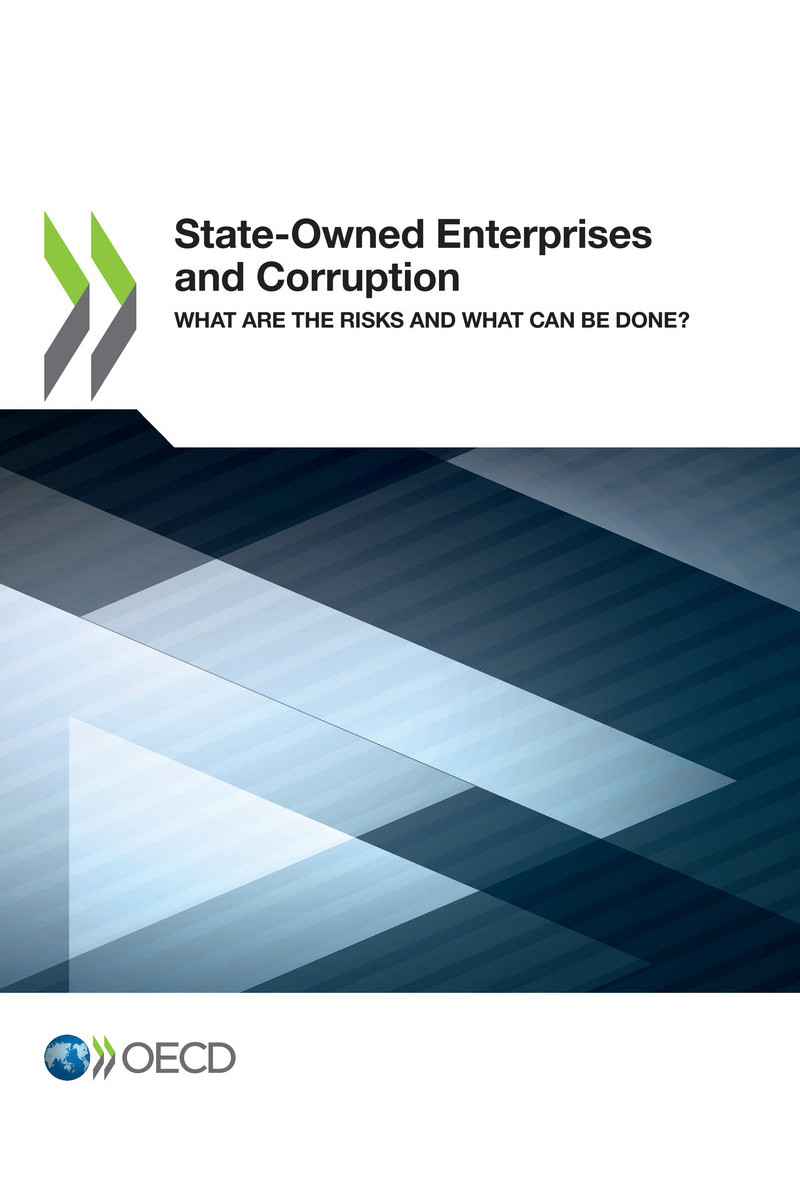
OECD (2018), State-Owned Enterprises and Corruption: What Are the Risks and What Can Be Done? , OECD Publishing, Paris.
https://doi.org/10.1787/9789264303058-en
Today more than a fifth of the worlds largest companies are state owned. State-owned enterprises (SOEs) play an important role in the global economy, particularly in key sectors such as public utilities, as well as natural resources, extractives and finance. They take different corporate forms often combining commercial and non-commercial objectives with increasingly international operations. Good governance of SOEs is critical for ensuring a level playing field in the marketplace, safeguarding the integrity of domestic economies, and supporting quality public service delivery.
Good corporate governance of SOEs, in accordance with the OECD Guidelines on Corporate Governance of State-Owned Enterprises , is also essential to help reduce the risk of corruption. In recent years, we have seen how corruption involving SOEs can cause serious economic and political damage and lead to a breakdown of public trust extending well beyond the SOEs themselves. This is why we need a concerted effort to stamp out corrupt and otherwise irregular practices in SOEs, as well as in government institutions exercising state-ownership rights.
This report, State-Owned Enterprises and Corruption , brings a comprehensive set of facts and figures to the discussion about the concrete risks facing SOEs and how they, and their state owners, go about addressing them. It will help shape an international debate that has, until now, been largely anecdotal. Based on the inputs of almost 350 members of executive management and boards of SOEs in OECD and partner countries, the report tracks the experiences of companies facing corruption and the challenges encountered by their management in making SOEs more efficient and transparent. It further charts the legal and institutional frameworks as well as concrete practices of OECD and non-OECD economies in ensuring high standards of governance and accountability in the SOEs they oversee.
The challenge is daunting. Two in five corporate insiders report to have personally witnessed corruption or irregularities in their companies in recent years. The number is even higher in SOEs operating in high-impact sectors such as extractives and public utilities where the value of concessions and public procurement contracts is typically large, despite the fact that many of these companies had implemented internal controls. This report examines why these internal controls did not work, looking for answers both within the SOEs and in the grey zone between the companies and their state owners.
A core component of the solution is to improve the way in which the state exercises its ownership rights, appoints the governing bodies of SOEs and communicates with the companies. The OECD is leading a convergence in the field of SOE governance and anti-corruption, identifying good practices in this report that will lay the foundation for new guidance for the state that goes beyond existing international standards. This process is taking place in co-operation with the G20, international organisations and civil society.
I encourage all governments to consider what the reports findings mean for the way in which they exercise ownership in SOEs, and participate in this important process of developing guidelines that contribute to stamping out corruption in this vital part of the corporate economy.
Angel Gurra

OECD Secretary-General
Corruption is the antithesis of good governance, and it is a direct threat to the purpose of state ownership. This report brings a comprehensive set of facts and figures to the discussion about the corruption risks facing state-owned enterprises (SOEs) and how they, and state ownership, go about addressing them. It is a first step towards developing guidance on anti-corruption and integrity in SOEs for the state as owners. This initiative is rooted in the OECD Guidelines on Corporate Governance of State-Owned Enterprises, the worlds sole internationally agreed standard for how governments should exercise its ownership rights over SOEs.
This stock-taking report integrates responses from almost 350 SOEs in 34 countries and state responses from 28 countries, together covering Argentina, Brazil, Canada, Chile, Colombia, Costa Rica, Czech Republic, Denmark, Finland, France, Hungary, Greece, Iceland, Israel, Italy, Japan, Kazakhstan, Korea, Latvia, Lithuania, Mexico, the Netherlands, New Zealand, Norway, Pakistan, Paraguay, Peru, Philippines, Poland, Russia, Slovak Republic, Slovenia, Spain, Sweden, Switzerland, Turkey and the United Kingdom.
The report was prepared by Alison McMeekin with oversight from Hans Christiansen, both of the Corporate Affairs Division in the OECD Directorate for Enterprise and Financial Affairs. It was developed in an ongoing discussion with the OECD Working Party on State Ownership and Privatisation Practices (Working Party), as part of the Working Partys ongoing initiative on supporting state-owned enterprise (SOE) reform in OECD and partner countries. A preliminary version was subject to a multi-stakeholder consultation during a Special Roundtable of the Working Party in October 2017, gathering additional input from participants including the OECDs consultation partners, Supreme Audit Institutions (SAIs), civil society and other international organisations. The report benefitted from the expertise and inputs of colleagues in the Public Sector Integrity Division of the OECD Public Governance Directorate and the Anti-Corruption Division of the OECD Directorate for Enterprise and Financial Affairs.
Font size:
Interval:
Bookmark:
Similar books «State-owned enterprises and corruption : what are the risks and what can be done?»
Look at similar books to State-owned enterprises and corruption : what are the risks and what can be done?. We have selected literature similar in name and meaning in the hope of providing readers with more options to find new, interesting, not yet read works.
Discussion, reviews of the book State-owned enterprises and corruption : what are the risks and what can be done? and just readers' own opinions. Leave your comments, write what you think about the work, its meaning or the main characters. Specify what exactly you liked and what you didn't like, and why you think so.

